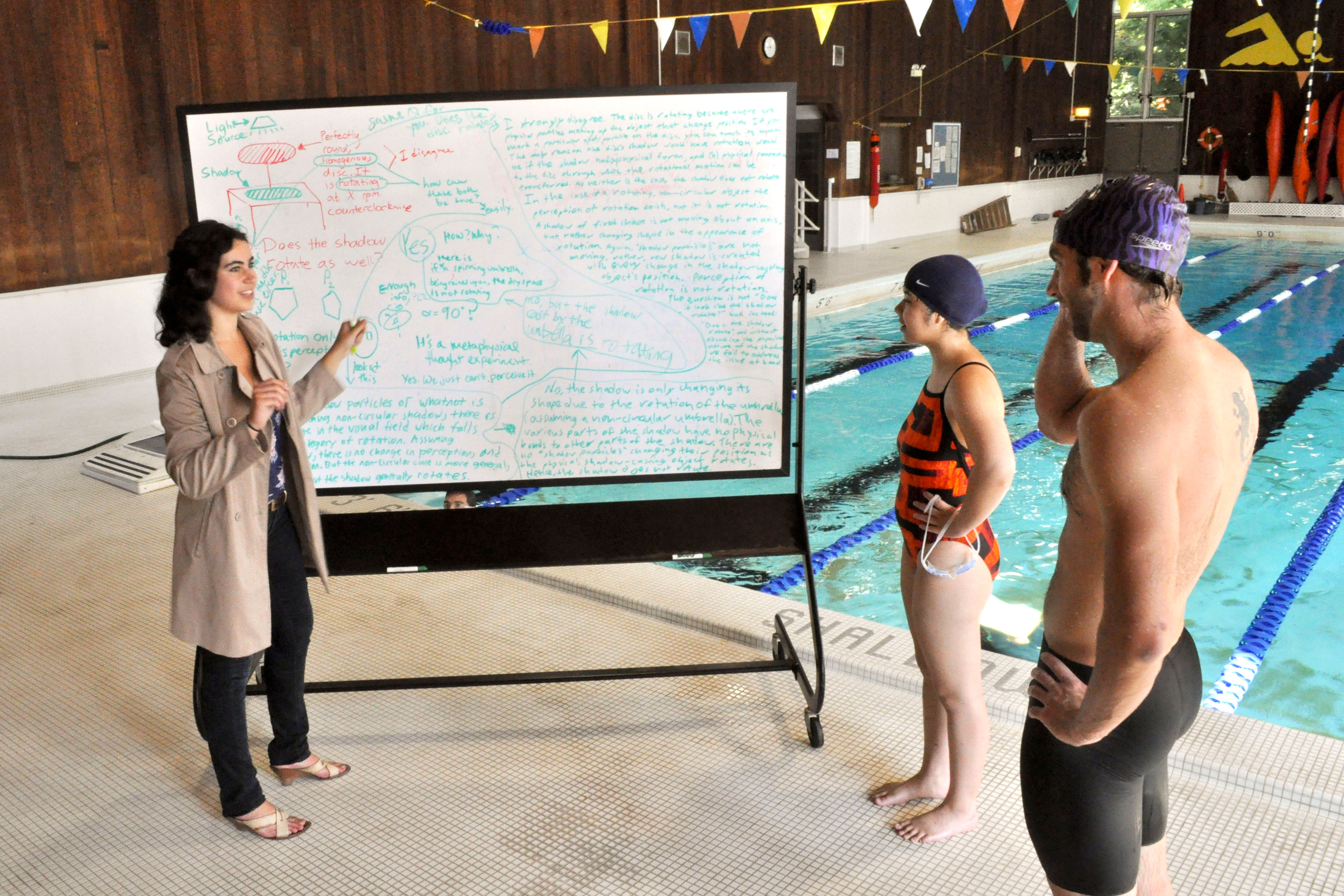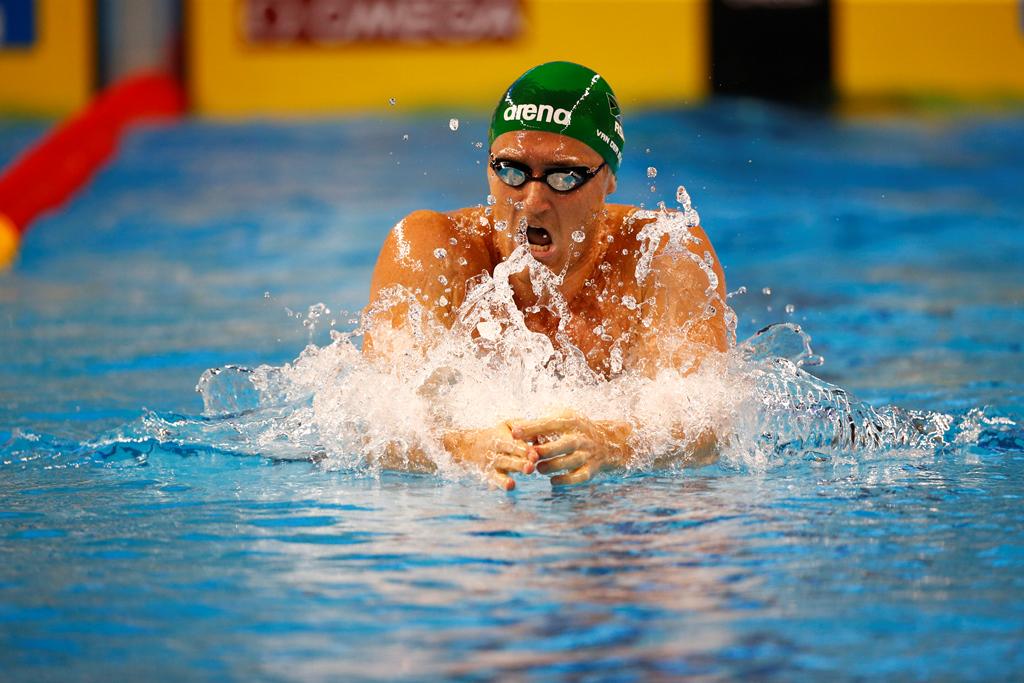So even if you include the daily half-hour dryland into the evening session, that's sixteen distinct training sessions a week. Which is a lot. But swimming training is not just about hard work; it's also about smart work. I do not think coaches are given enough credit for the time and expertise that goes into structuring and implementing a training program: in the past, when the science was ambiguous, coaches trained their athletes in the dark - quite the challenge - and now there is so much science that a great coach is a very intelligent person having invested enormous time resources resulting in significant expertise in all sorts of sports science ranging from bio-mechanics to psychology.
 |
| Swimming sets are probably a little less complicated than metaphysics. |
I want to start a series of posts explaining the logic behind the training program that my coach(s) implement with me. To start off with, it's important to understand the kind of sets that make up training in the pool. In the pool, I would say there are really four distinct categories of set and a fifth miscellaneous set which combines elements from the others. These are:
- Drill sets: Here I work on the technical aspects of the stroke and of the race, focusing on making sure the technique is conducive to the fastest times by reducing drag, ensuring that the stroke is effective, and so on. Whilst usually less physically demanding, they are important to set the stage for optimal swimming. Water is an unforgiving medium with much more drag than air to slow me down, and an intense training schedule means poor form repeated over hundreds of kilometers is bound to result in injury. So perfecting technique is crucial to swimming.
 |
| Perfecting the breathing yawn face is a lifelong process. Alas, no medals are given for how bored snapshots of swimmers' faces look. (Photo: Swimming World) |
- Heart rate sets: These are some of the toughest sets, in my opinion, as they are mid-to-high intensity in terms of speed with minimal rest in between. Heart rate sets are about getting the heart rate up and keeping it there, so as to maximise the ability of the heart to work effectively under physical duress. They may not be as long as aerobic sets, but they are significantly faster.
- Sprint sets: My personal favourites, sprint sets are about going fast for a short amount of time and distance. Part of the reason I like sprint sets so much is that I can vary elements of my race and get instant feedback on how it impacts my performance - as the coach says, the clock is your best friend, who is always there and never lies to you. More than just testing fields for subtle technique changes, sprint sets are about putting together the rest of the training to make sure that it all comes together in an effective and fast end-product. Drill sets may be important, but two-kicks-one-pull breaststroke will never be an Olympic event!
- Combinations: Whilst I think the above four categories cover the main types of sets, it is important to understand that they can be combined. Heart rate sets, for instance, can be made longer (more like an aerobic set) or shorter (more like sprints). Sprint sets need not be full-stroke, they could be sprint kick sets, for instance - and kicking is basically a drill. Similarly there could be aerobic drill sets.
A typical session in the pool will, for me, usually involve some sort of drill set and usually one other element from these categories (sometimes two). How do you arrange the focus of a training session over the course of a season and its off-season? That's another question.
No comments:
Post a Comment